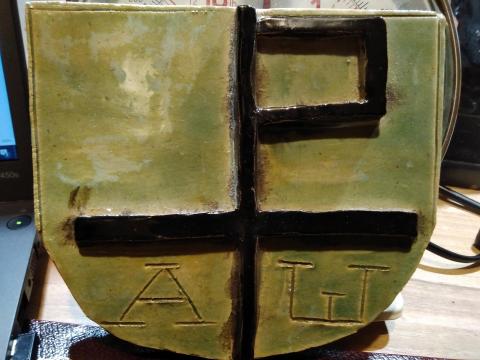Chi Rho and the State

The Chi-Rho (I pronounce it the same as the Egyptian capital, but with equal emphasis given to each syllable) is an early Christian symbol. It’s essentially a P crossed by an X, the x being the ch sound in Greek, and the P the r sound. I once made a crude version in fourth year pottery, evidently misunderstanding the correct angle of Chi. It was a symbol the early Christians used to represent their faith in Christ, like the better-known sign of the fish.
Sadly, the Chi Rho was appropriated by the state, when emperor Constantine had it painted on his soldiers’ shields at the battle of Milvian Bridge in 312. His victory ensured the end of persecution, but the beginning of a more malignant enemy- erastianism. This is where the state directs the church in its conduct and theology. It is named after a sixteenth century Swiss, Thomas Erastus.
Although human government was established by God after the Fall, and its governors are God’s agents to restrain evil, it is only ever a pale reflection of heaven’s perfect justice. Too often, the state becomes oppressive, its rulers too powerful. We Christians must obey the state and pay the taxes it demands. When its claims conflict with Christ’s, however, it deserves only our passive disobedience, for ‘it is better to obey God than men’. The coming weeks and months may provide an interesting challenge for the Christian. As the state slowly re-opens our communities and amenities, will our churches be last on the list of premises to unlock? Our secular masters can barely understand why people need to go to church in the first place. Chi-Rhos may not be painted on the shields, but the time may come when we cannot serve two masters.
- Log in to post comments


 Sunday Worship 10.45am & 6.00pm
Sunday Worship 10.45am & 6.00pm